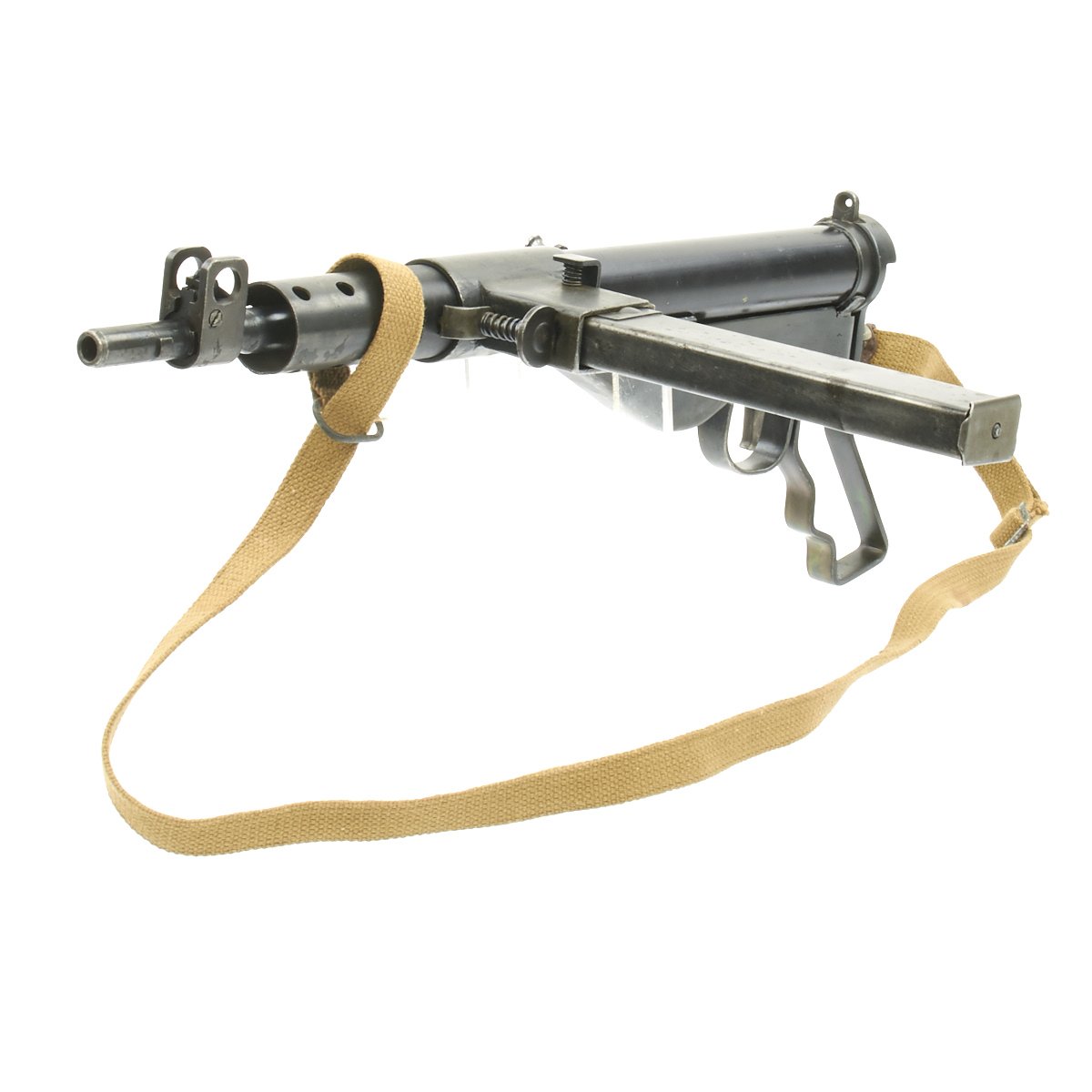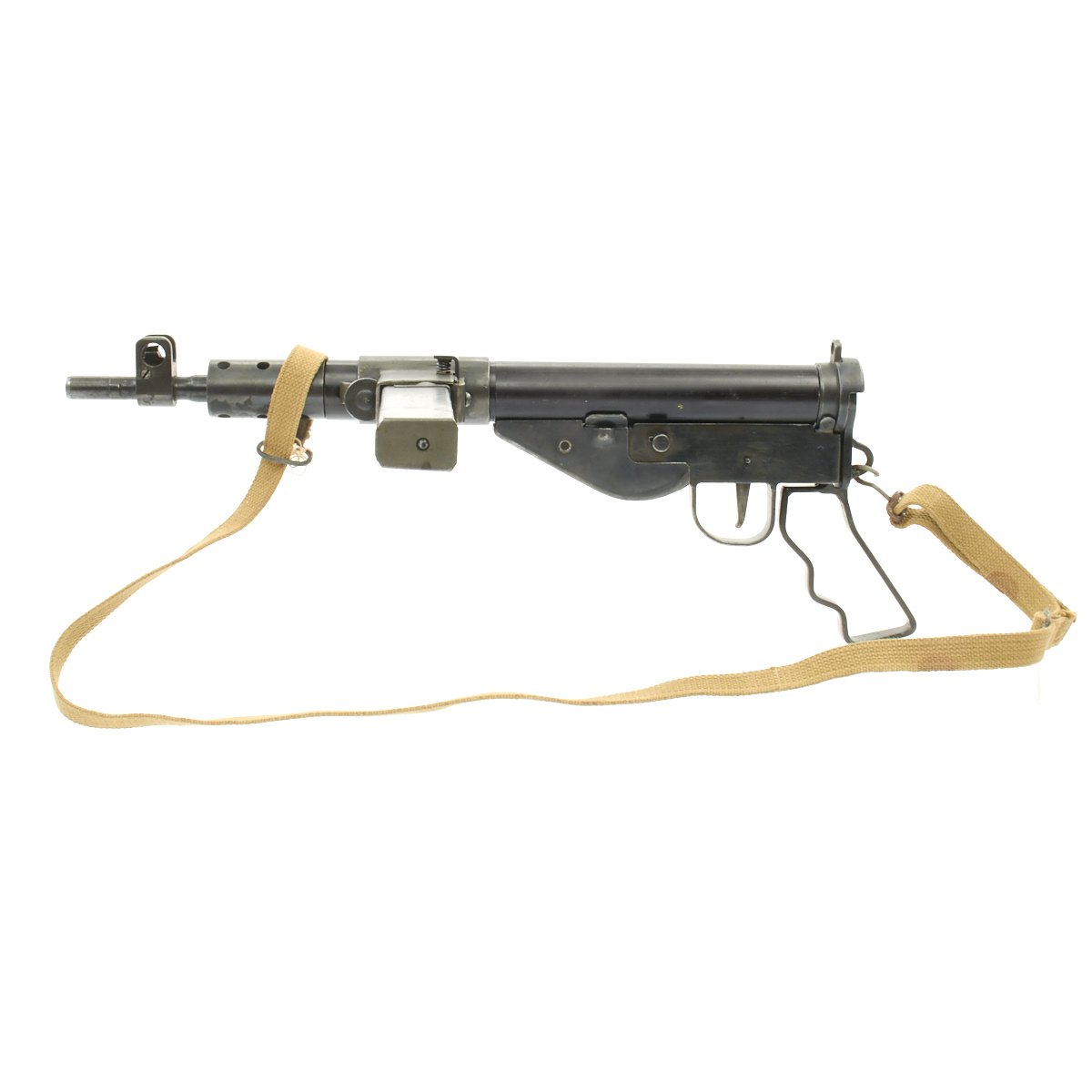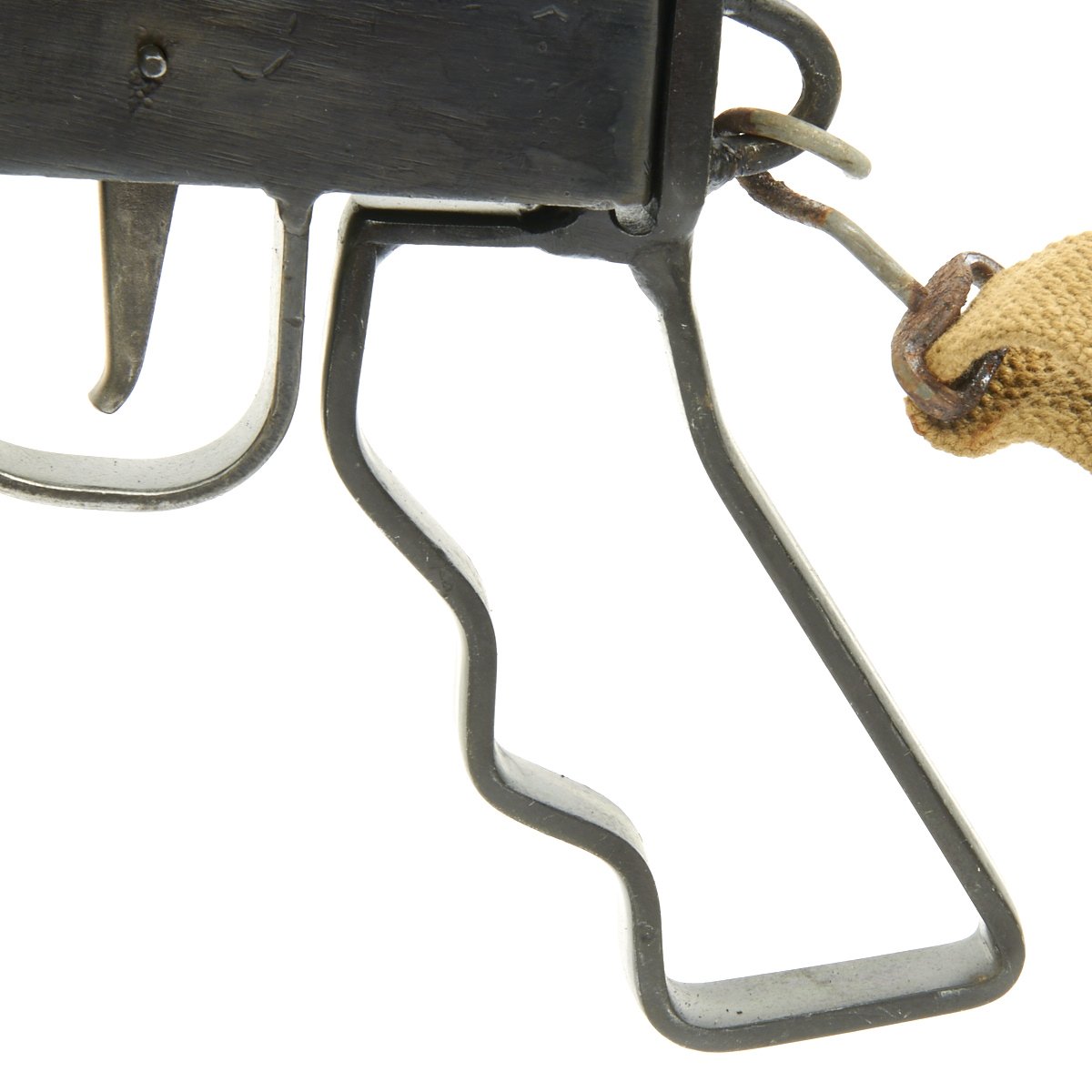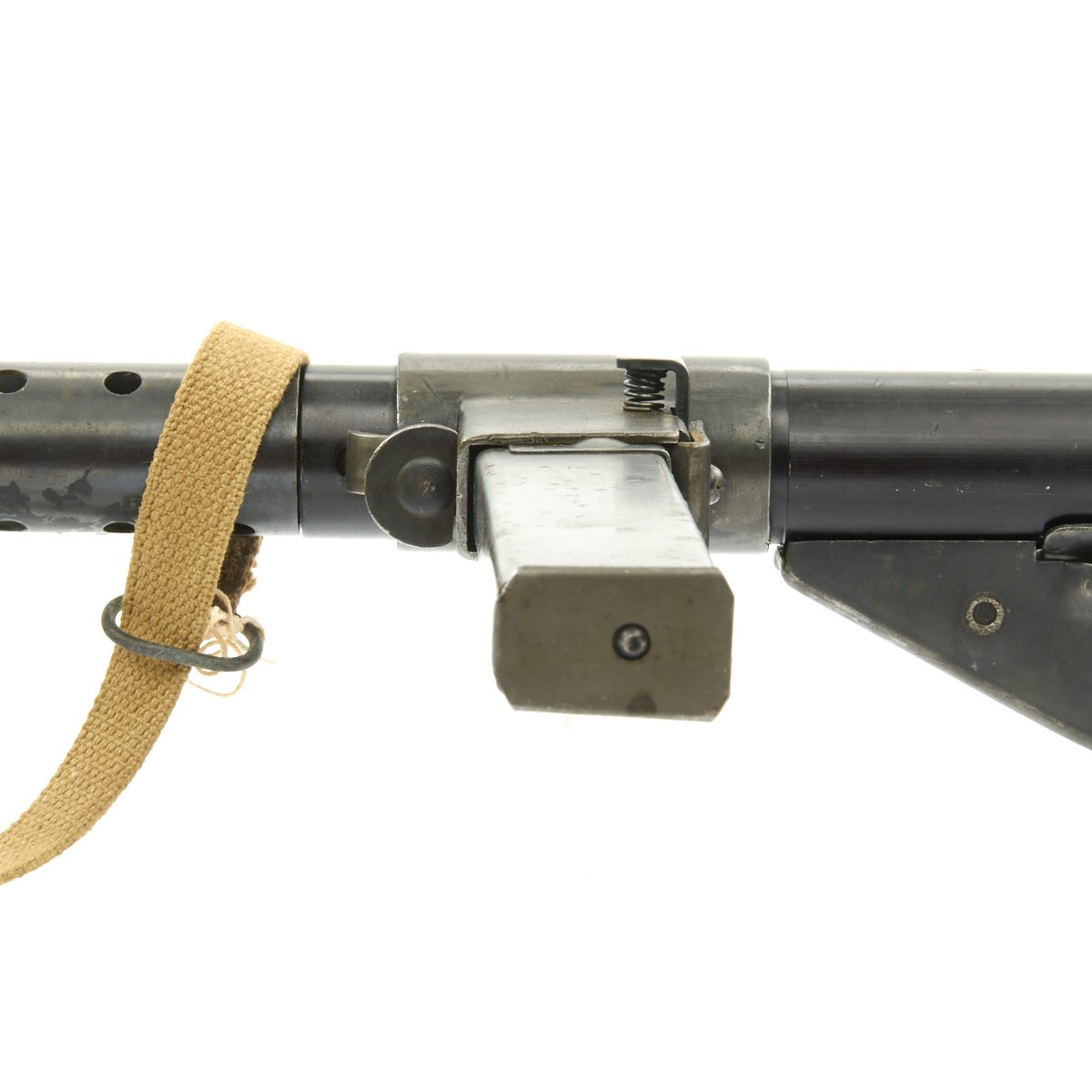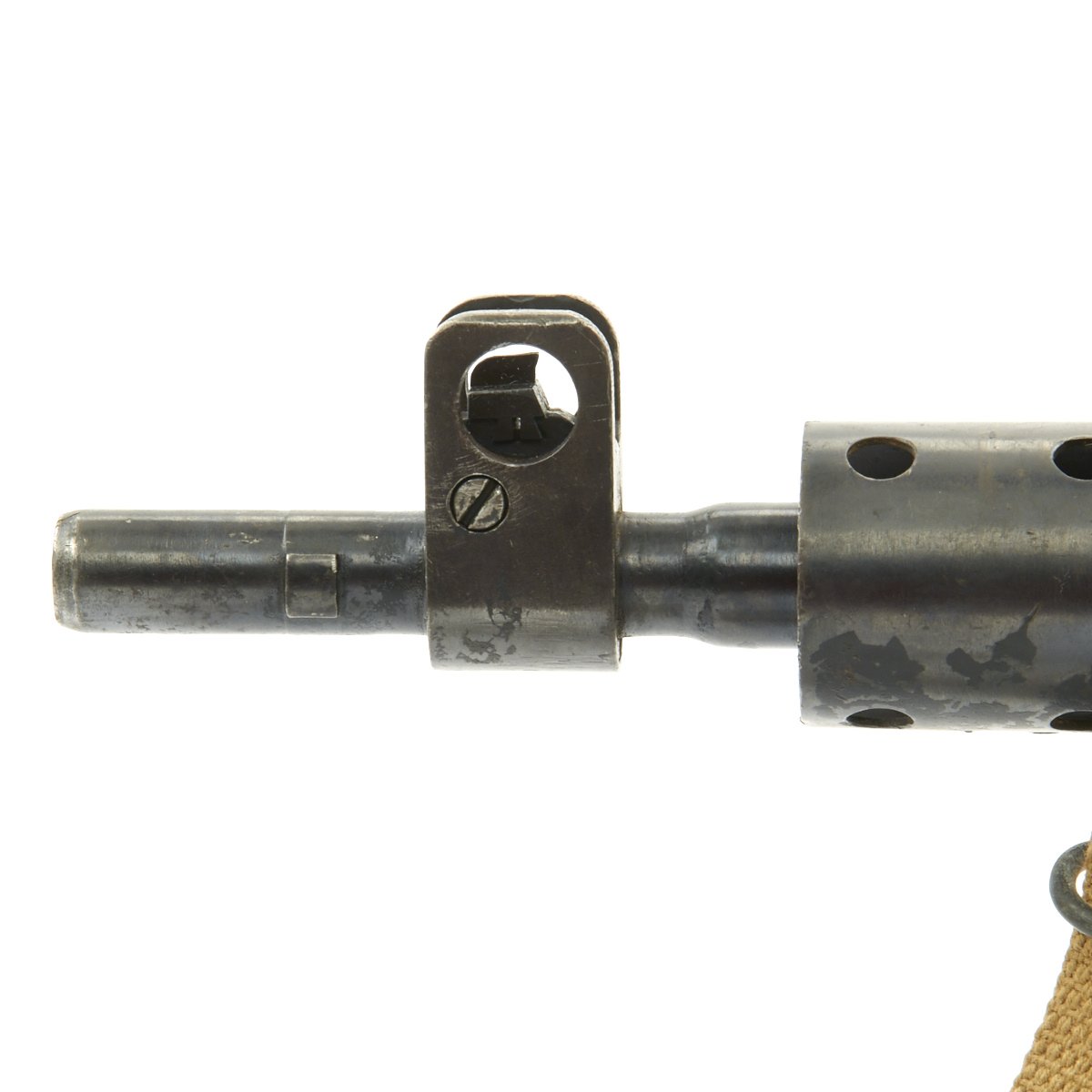Original British WWII Sten Mk V Display Paratrooper Experimental Submachine Gun with Sling Original Items
$ 795,00 $ 238,50
Original Item: Only one available. Introduced in 1944, the Mk V was essentially a better-quality, more elaborate version of the Mk 2. Changes included a wooden pistol grip, a vertical wooden fore grip, a wooden stock, and a bayonet mount. There was a No4 Lee–Enfield foresight and the weapon was of better quality manufacture and finish than the Mk2 and Mk3. The Sten bandolier issued to paratroopers held seven full magazines.
Another variant of the Mk V had a swivel stock and rear sight mirror intended for firing around corners in urban warfare, similar to the Krummlauf developed by the Germans for the StG 44. This particular example has been made using a replica of an experimental paratrooper skeletal rear pistol grip, which replaces both the wood rear stock and rear pistol grip. This results in a much more compact firearm, easily concealed for missions behind enemy lines.
This example constructed from original parts on a new made solid receiver, is fully ATF compliant as a non-gun and exactly duplicates the feel and appearance of the original. The upper side of the magazine housing is marked STEN, though the other markings are unfortunately not legible. It is equipped with an original WW2 sling, marked ROVER 45.
The Mk V is generally considered to be the best of the Sten family, and was most extensively issued to airborne troops. It is widely represented in British hands in the film A Bridge Too Far. Combat photographs of British airborne troops show how extensive the use of the Mk5 was.
The Mk V was designed to use an Enfield rifle sling so that it could be supported with the sling around the soldier’s neck as was developed for the early Thompson Lend-Lease deliveries to Britain. This in fact represents the origin of the “assault sling” configuration, which is used almost universally today.
A fine original display gun fully approved by BATF to be non-functional and totally legal without any type of license.
Fast Shipping with Professional Packaging
Thanks to our longstanding association with UPS FedEx DHL, and other major international carriers, we are able to provide a range of shipping options. Our warehouse staff is expertly trained and will wrap your products according to our exact and precise specifications. Prior to shipping, your goods will be thoroughly examined and securely secured. We ship to thousands clients each day across multiple countries. This shows how we're dedicated to be the largest retailer on the internet. Warehouses and distribution centres can be located throughout Europe as well as the USA.
Note: Orders with more than one item will be assigned a processing date depending on the item.
Before shipping before shipping, we'll conduct a thorough inspection of the items you have ordered. Today, the majority of orders will be delivered within 48 hours. The delivery time will be between 3-7 days.
Returns
The stock is dynamic and we cannot completely manage it because multiple stakeholders are involved, including our factory and warehouse. So the actual stock may alter at any time. It's possible that you may not receive your order once the order has been made.
Our policy is valid for a period of 30 days. If you don't receive the product within 30 days, we are not able to issue a refund or an exchange.
You can only return an item if it is unused and in the same state as the day you received it. You must have the item in its original packaging.
Related products
Uncategorized
Uncategorized
Armored Burgonet Helmet & Polearm from Scottish Castle Leith Hall Circa 1700 Original Items
Uncategorized
Australian WWII Owen MK1 Machine Carbine SMG Custom Fabricated Replica with Sling Original Items
Uncategorized
Uncategorized
Uncategorized
Uncategorized
Uncategorized
Angolan Rebel 1970s era 60mm Inert Display Mortar from Angolan Civil War Original Items
Uncategorized
Uncategorized
Uncategorized
Uncategorized
Armoured Fighting Vehicles of the World: AFVs of World War One (Hardcover Book) New Made Items
Uncategorized
Uncategorized
Uncategorized
Uncategorized
Uncategorized
Uncategorized
Uncategorized
